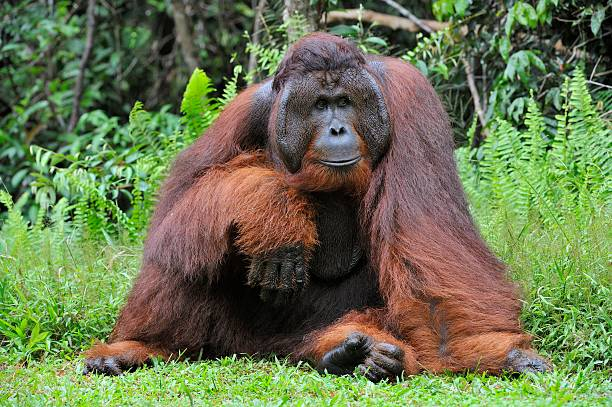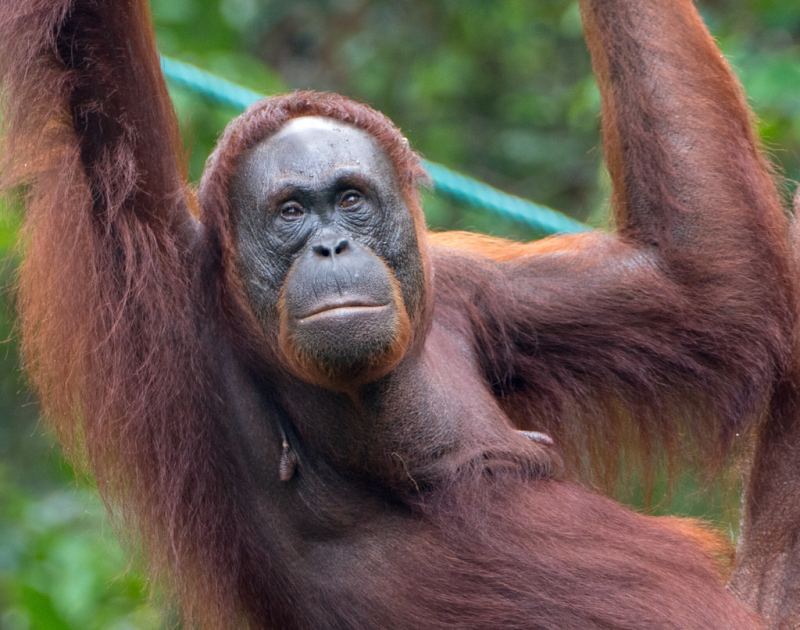Orangutans Are Sexually Dimorphism
Males and females of orangutans differ significantly in size and shape because they are sexually dimorphism. Their body size and face morphology are where the most obvious differences may be detected. Men frequently weigh more than 200 pounds (90 kg), whereas women are between one-third and one-half their size.
The fact that males have larger cheek pads or flanges may be the distinction between completely developed males and females that is most noticeable. Subadult males and fully adult males are the first and second maturation phases for male orangutans, respectively. Subadult males often have narrower bodies, shorter hair than mature males, no cheek pads or flanges (they are unflanged), and smaller neck sacs. These secondary sexual traits make guys more appealing to adult females and help them find partners.
Male orangutans also have a neck sac, which they utilize to vocalize, and long, dense hair that makes them look even bigger. The sound produced by the throat sac is quite distinctive and recognizable and reverberates across the forest. The "Long Call" is what they use to locate females, alert them to their presence, or warn other males to stay away.
Until they come upon a female who is willing to mate, the males usually remain alone. To guarantee successful mating, they will remain with the female for a few days, but they will soon return to living alone. Males will typically travel on the ground more than females because of their enormous size. The orangutan is the only ape species with hair that ranges in color from orange to reddish brown.












